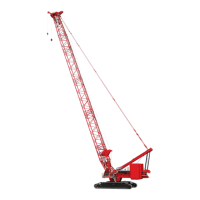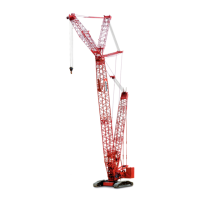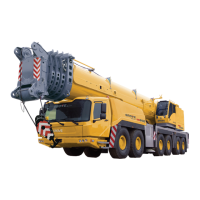Lubrication Guide MLC300
F2280-2
Published 07-21-21
LUBRICATION SYMBOLS
The symbols in Figure 1 are used in decals on the crane to
identify lubrication points.
GENERAL LUBRICATION
This publication describes the major lubrication
considerations for this crane. Some points requiring
lubrication (for example, the linkage in control members not
equipped with grease fittings) have been omitted, but they
should be lubricated in accordance with good maintenance
practices (see “
Oil Can Points” on page 3).
The lubrication intervals for vendor-supplied parts (engine,
light plant, etc.) have also been omitted from this Lubrication
Guide. Service vendor-supplied parts according to the
original equipment manufacturers’ manuals.
Depending on the options your crane is equipped with, some
lubrication points given in this Lubrication Guide may not
apply to your crane.
LUBRICATION INTERVALS
The intervals listed in this Lubrication Guide are for average
operating conditions based on experience gained by
testing lubricants at the factory and on recommendations
given by the lubricant suppliers. Severe operating conditions
(such as excessively dusty or corrosive atmosphere,
unusually high or low outside temperature, extreme
loadings, uncommonly frequent or long operating cycles)
may require shortening the lubrication intervals. Follow the
intervals given in this Lubrication Guide until adequate
experience is obtained to establish intervals which meet your
operating conditions.
Bearings and bushings that are too warm, excessive play in
moving parts, binding in moving parts, excessive or
abnormal wear in gears and chains, and rust accumulation
indicate a lack of lubrication. If these conditions are found
during regular inspection, the lubrication interval for the
faulty parts should be shortened.
Perform an oil analysis at regular intervals of each fluid used
in the crane to determine oil-change intervals. Oil sample kits
are provided in the Parts Box of current production cranes.
It is assumed that the maintenance intervals are cumulative,
that is, daily maintenance tasks will be performed together
with weekly tasks, daily and weekly tasks will be performed
together with monthly tasks, etc.
Intervals are based on engine hour meter or individual
component hours of operation readings, as required.
Individual component hours of operation can be viewed on
the display in the cab (see MLC300 Main Display Manual for
instructions).
WARNING
Personal Injury Hazard!
Personal injury can occur if the following safety
precautions are not taken before and after servicing
machinery:
• Stop the engine and wait until all moving parts have
completely stopped (if necessary, position any grease
fittings on moving parts at the access point and then
stop the engine).
• Attach a WARNING “out-of-order” sign to the engine
start control in the operator’s cab to warn all
personnel that the crane is being serviced.
• Do not operate the crane until all safety guards and
covers have been securely reinstalled and all
maintenance equipment has been removed.
CAUTION
Machinery Damage!
Before lengthening lubrication intervals, check that all
parts are receiving an adequate supply of clean lubricant.
Otherwise, parts will be damaged from a lack of
lubrication. Contact your Manitowoc dealer or Manitowoc
Crane Care Lattice Team for recommendations on
lengthening lubrication intervals.

